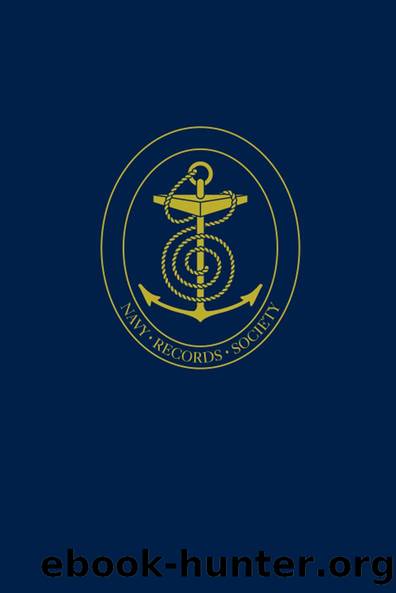The Naval Miscellany by Susan Rose

Author:Susan Rose [Rose, Susan]
Language: eng
Format: epub
ISBN: 9781000341751
Barnesnoble:
Publisher: Taylor & Francis
Published: 2020-11-25T00:00:00+00:00
At that time, Lutwidge was one of three admirals commanding British forces opposed to the French in the Channel â the other two being Admiral Archibald Dickson, Commander-in-Chief, North Sea, and Vice Admiral Alexander Graeme, the Commander-in-Chief at the Nore. St Vincent decided that the best way to deal with the threat was to create a new, unified and mobile force of small vessels, with the sole purpose of âfrustrating the enemyâs designsâ. And, to show the French that he meant business, he gave this command to the victor of the Nile and Copenhagen. Nelson took up his appointment on 27 July and remained in post for almost three months, until 22 October.
Nelsonâs biographers tend to deal with this period in his career fairly cursorily and to downplay the importance of the command. Certainly, when measured against the achievements of his other great campaigns, the three months he spent in the Channel appear almost an interlude. But the force he had under his direct orders was far from insignificant: indeed in terms of numbers it was the largest that he ever commanded. The actual composition of the squadron was never static but at the height of the campaign, in early August, he had over seventy ships and vessels at his disposal (see the list on pp. 253â5). These ranged from third-rate battleships to tiny revenue cutters and included a number of specialist vessels, including seven bombs. However, the core of the force, over thirty in all, were small, handy gun brigs and gun vessels, mounting between 12 and 14 guns. About half had been built in 1797 to deal with an earlier invasion scare: the remainder had been rushed out in April and May 1801 to meet the present emergency.
To assist him with the administration of this large and widely scattered force, Nelson applied to the Admiralty for permission to employ as his aide-de-camp one of his young protégés, Commander Edward Parker who had served with him in the Mediterranean and at Copenhagen.1 It was Parker, therefore, who had responsibility for promulgating all Nelsonâs orders to his squadron and one of the ways this was achieved was by using the âPublic Order Bookâ that is printed below. The first order in the book announced Parkerâs appointment as ADC and instructed that âall messages or orders, whether verbal or written, delivered by him in my name be obeyed as coming from meâ [1].
Apart from the two public letters by Nelson and Lord St Vincent [28, 28A] none of the material in this book has been published before. Although lodged in the Manuscripts Collection of the Admiralty Library,2 it appears to have escaped notice until recently: certainly, it has not been used by any of Nelsonâs biographers. However, when the Manuscripts Collection was moved to Portsmouth, and placed under the curatorship of the Royal Naval Museum, the Order Book was identified by the Museumâs Curator of Manuscripts, Matthew Sheldon. He drew it to my attention and I judged it sufficiently interesting to
Download
This site does not store any files on its server. We only index and link to content provided by other sites. Please contact the content providers to delete copyright contents if any and email us, we'll remove relevant links or contents immediately.
| Africa | Americas |
| Arctic & Antarctica | Asia |
| Australia & Oceania | Europe |
| Middle East | Russia |
| United States | World |
| Ancient Civilizations | Military |
| Historical Study & Educational Resources |
Room 212 by Kate Stewart(5035)
The Crown by Robert Lacey(4722)
Endurance: Shackleton's Incredible Voyage by Alfred Lansing(4676)
The Iron Duke by The Iron Duke(4291)
The Rape of Nanking by Iris Chang(4136)
Joan of Arc by Mary Gordon(4013)
Killing England by Bill O'Reilly(3950)
Say Nothing by Patrick Radden Keefe(3903)
I'll Give You the Sun by Jandy Nelson(3356)
Shadow of Night by Deborah Harkness(3294)
Hitler's Monsters by Eric Kurlander(3268)
Mary, Queen of Scots, and the Murder of Lord Darnley by Alison Weir(3147)
Blood and Sand by Alex Von Tunzelmann(3138)
Darkest Hour by Anthony McCarten(3070)
Eleanor & Park by Rainbow Rowell(3061)
Margaret Thatcher: The Autobiography by Thatcher Margaret(3028)
Red Famine: Stalin's War on Ukraine by Anne Applebaum(2872)
Book of Life by Deborah Harkness(2863)
The One Memory of Flora Banks by Emily Barr(2801)
